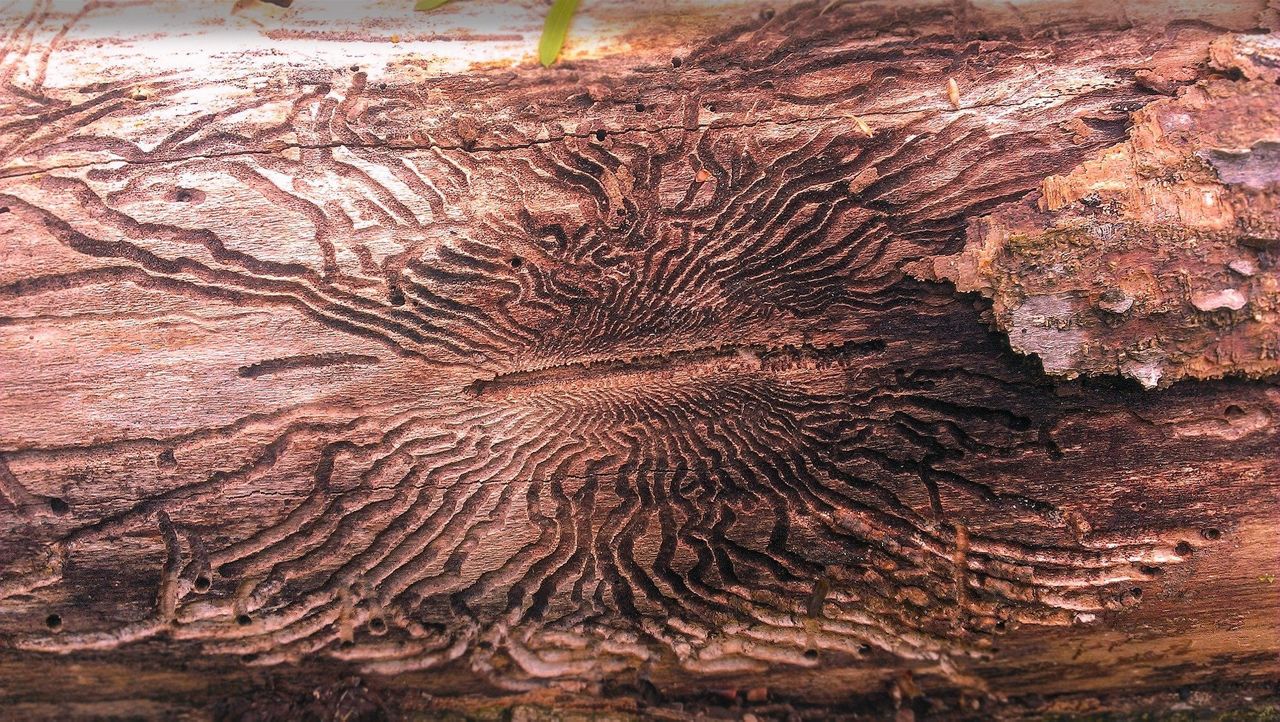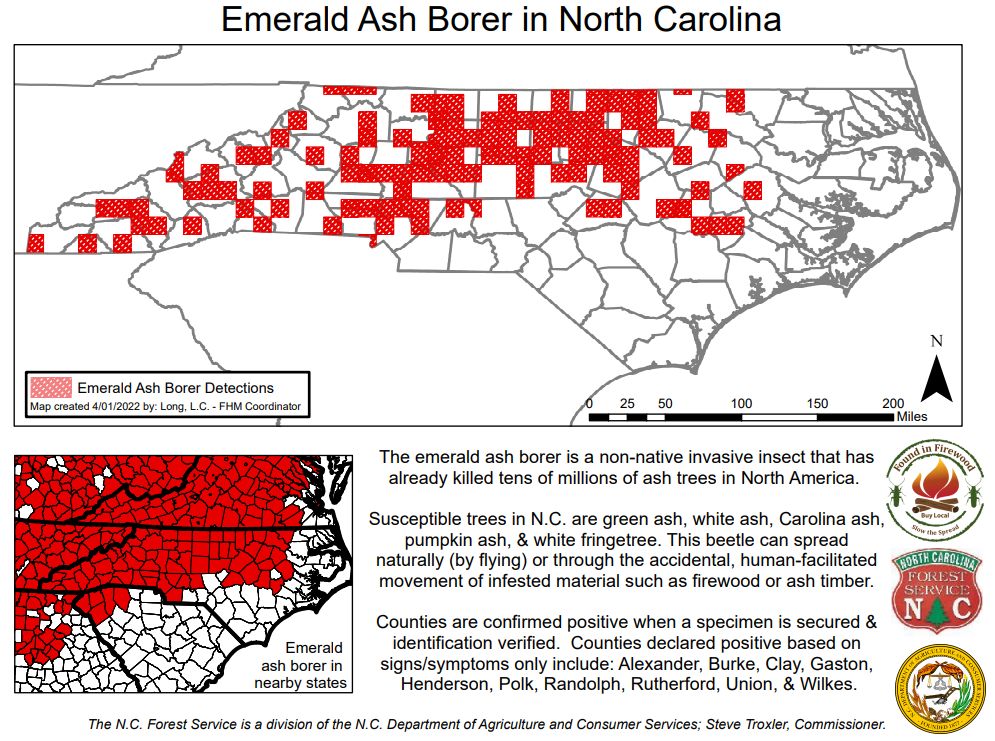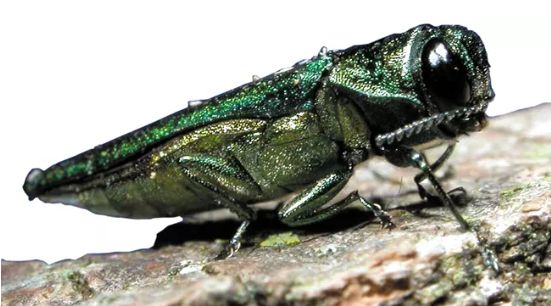STANLY COUNTY, N.C. — An invasive insect, responsible for killing native ash trees and native white fringetrees, has been found in Stanly County for the first time.
The emerald ash borer, a metallic green beetle that bores into ash trees and feeds on the tissue beneath the bark, was found on private property in Albemarle, officials say.
“A forestry consultant noticed a “D” shaped exit hole in the ash tree canopies while clearing an area,” said Jim Moeller, forest health specialist with the N.C. Forest Service. “Once the trees were cut down, N.C. Forest Service personnel helped peel back the bark and found the insect.”

According to information from the N.C. Forest Service, the signs and symptoms of an EAB infestation include:
- Thinning and dying crowns
- Increased woodpecker activity that causes the tree to look like it is losing patches of bark
- Small, 1/8-inch D-shaped exit holes where adult beetles emerged from the trees
- Galleries on the inside of the bark
- Cream-colored larvae
- Epicormic sprouting or sprouting from the main stem of the tree
Experts say the insects target native ash trees and the native white fringetree, but Chinese white fringetrees, often planted for decorative purposes, are believed to be resistant.
So far, the beetles have been found in 62 counties across North Carolina, including:
Alamance, Alexander, Alleghany, Ashe, Avery, Buncombe, Burke, Cabarrus, Caldwell, Caswell, Catawba, Chatham, Cherokee, Clay, Cleveland, Davidson, Davie, Durham, Forsyth, Franklin, Gaston, Graham, Granville, Guilford, Halifax, Haywood, Henderson, Iredell, Jackson, Johnston, Lenoir, Lincoln, Macon, Madison, McDowell, Mecklenburg, Mitchell, Montgomery, Nash, Orange, Person, Pitt, Polk, Randolph, Rockingham, Rowan, Rutherford, Stanly, Stokes, Surry, Swain, Transylvania, Union, Vance, Wake, Warren, Watauga, Wayne, Wilkes, Wilson, Yadkin and Yancey.

“The entire state of North Carolina is under a quarantine for EAB, which prohibits the movement of ash plant parts, the insect itself, ash nursery stock and all hardwood firewood into nonquarantined areas, such as central Tennessee, most of Alabama and all of Florida,” according to a release.
Officials say adult EAB beetles are about a half-inch long and 1/8-inch wide with metallic purple-red coloring on their bodies beneath their wing covers. In North Carolina, the adult EAB is typically active from late spring to early summer, likely April through June, but EAB larvae may be found under the bark of the tree most of the year, according to the N.C. Forest Service.
For more information on the EAB, click here. For a full list of federal EAB quarantines, click here.
Justin Pryor - Digital Media Producer
Justin is a Charlotte-based digital media producer. He is a South Carolina native who worked in similar roles at a Charlotte TV station before joining Spectrum News 1 in 2019. Justin is a graduate of the University of South Carolina.






